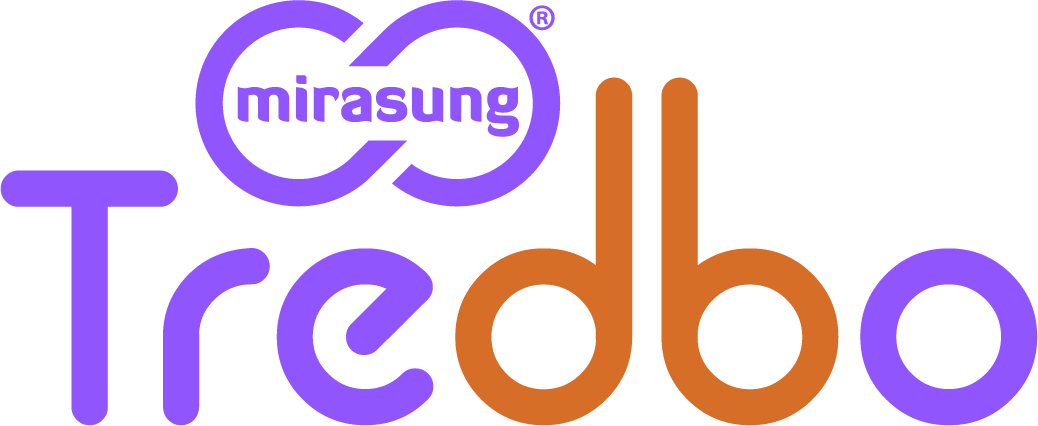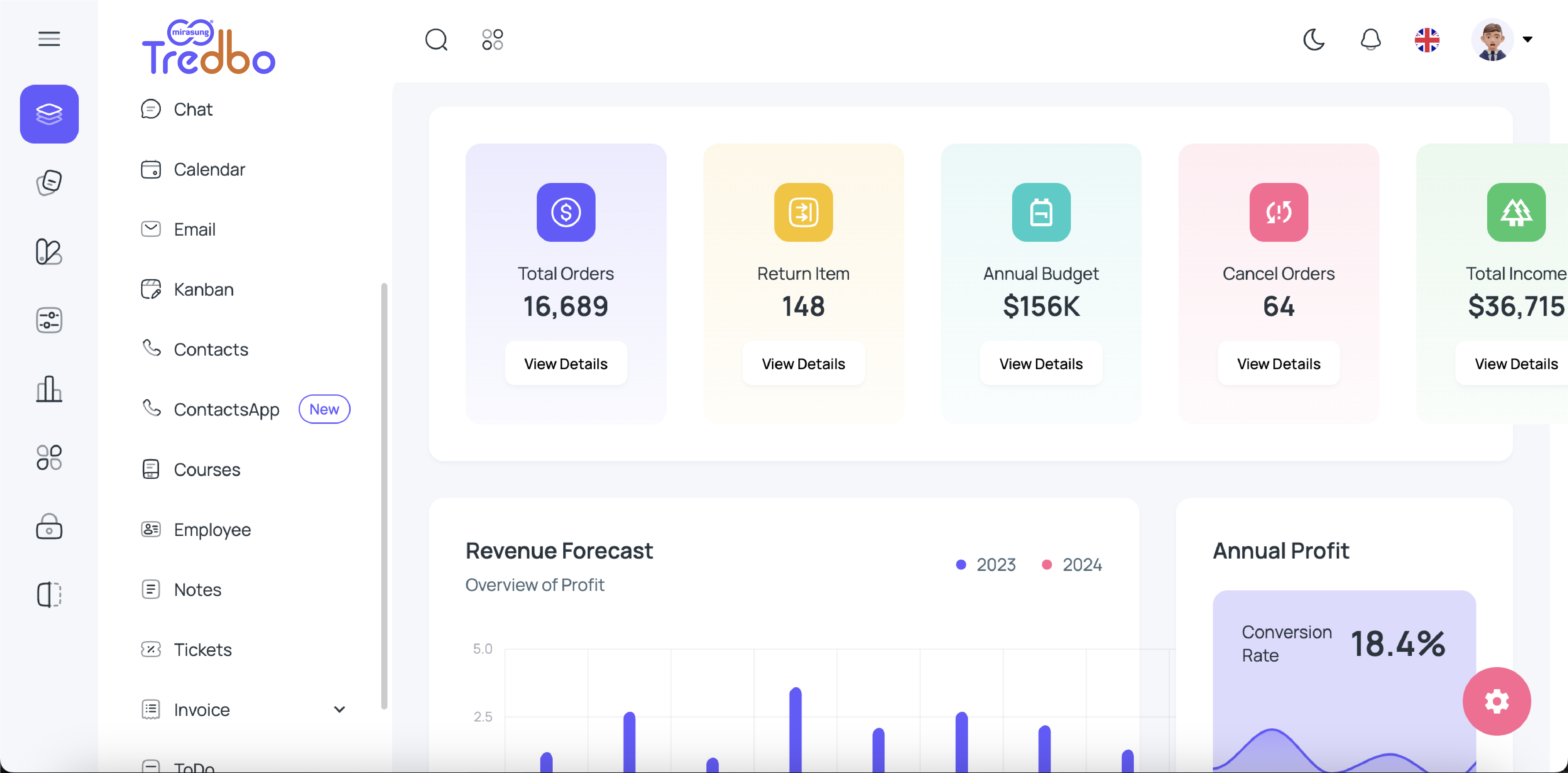HRMS

Mirasung Tredbo - HRMS
Mirasung Human Resource Management System (HRMS) is an integrated suite of software tools designed to streamline and automate HR tasks, from recruitment and onboarding to payroll and performance management. It helps organizations manage their workforce more efficiently, ensuring that HR processes are simplified, accurate, and compliant with labor regulations. HRMS not only supports HR departments but also enhances employee experiences through self-service features and robust data analytics.
Core Modules of HRMS:
HRMS systems typically include a variety of modules, each designed to address different aspects of human resources management. The core modules of an HRMS typically include:
Enquire Now for Tailored IT Solutions!
Looking for reliable IT services and support, custom software development, or AI solutions? Our team is ready to help your business grow with cutting-edge technology. Contact us today to get a personalized consultation!
Tredbo HRMS Features:
- Recruitment and Onboarding
- Employee Information Management
- Time and Attendance Management
- Payroll and Compensation
- Performance Management
- Learning and Development (L&D)
- Employee Engagement and Retention
- Reporting and Analytics
- Compliance Management

Recruitment and Onboarding:
Job Postings and Applications
Enables HR teams to post job openings and track applications in real-time, often integrating with job boards and career sites.
Applicant Tracking System (ATS)
Manages the recruitment process by filtering resumes, scheduling interviews, and tracking candidate progress.
Interview Scheduling
Automates the scheduling of interviews and integrates with calendar tools for seamless coordination.
Candidate Evaluation
Allows recruiters to rate and assess candidates based on predefined criteria, ensuring consistent hiring practices.
Onboarding
Streamlines the onboarding process for new hires, automating document submission, welcome messages, training schedules, and compliance paperwork.
Employee Information Management:
Employee Profiles
Stores personal information, job roles, contact details, and work history of employees in a centralized database.
Document Management
Manages documents such as contracts, certifications, performance reviews, and other employee records, with easy access and tracking.
Self-Service Portal
Empowers employees to update personal information, request leave, and view payslips and benefits through a secure portal.
Organizational Structure
Tracks reporting hierarchies, teams, and departments, giving employees and managers a clear view of the company structure.
Time and Attendance Management:
Leave Management
Automates the process for employees to request leave, track balance, and for HR to approve or reject requests.
Timesheets
Employees can log their working hours, and managers can approve or adjust time entries.
Shift Scheduling
HR or managers can create and manage employee work schedules, considering preferences, availability, and labor laws.
Absence Tracking
Monitors absenteeism patterns, including sick leave, vacation, and unpaid time off.
Payroll and Compensation:
Payroll Calculation
Automatically calculates employee salaries, including deductions (taxes, benefits), bonuses, and overtime.
Tax Compliance
Ensures compliance with federal, state, and local tax laws, automatically calculating and filing tax withholdings.
Payslips
Generates payslips and allows employees to view and download them, often with detailed breakdowns of earnings and deductions.
Compensation Management
Tracks salaries, bonuses, commissions, and other forms of compensation, including adjustments and pay raises.
Benefits Administration
Manages employee benefits, including health insurance, retirement plans, and stock options, ensuring proper enrollment and communication.
Performance Management:
Goal Setting
Allows employees and managers to set SMART goals (Specific, Measurable, Achievable, Relevant, Time-bound) aligned with business objectives.
Performance Appraisals
Facilitates regular performance reviews, including feedback collection, goal progress tracking, and rating scales.
Continuous Feedback
Enables ongoing feedback between managers and employees to address performance issues in real-time.
Competency Management
Tracks and evaluates employees' skills and competencies, often using a competency matrix.
360-Degree Feedback
Collects feedback not only from managers but also from peers and subordinates to get a comprehensive view of employee performance.
Learning and Development (L&D):
Training Management
Organizes employee training programs, tracks progress, and assesses results.
Skills Development
Helps employees identify and improve their skills and competencies through internal or external courses.
Certification Tracking
Monitors certifications and licenses that employees need to maintain, ensuring timely renewals.
Career Development
Supports career pathing and succession planning by identifying skill gaps and offering opportunities for advancement.
Employee Engagement and Retention:
Surveys and Polls
Conducts employee engagement surveys, satisfaction polls, and exit interviews to gauge morale and gather feedback.
Recognition Programs
Enables managers to recognize employees for achievements, milestones, and excellent performance.
Employee Wellbeing
Tracks employee wellbeing initiatives, such as mental health programs, stress management, and work-life balance efforts.
Retention Analytics
Uses data and analytics to predict potential employee turnover and identify ways to improve retention.
Reporting and Analytics:
Customizable Reports
HRMS provides robust reporting tools that allow businesses to generate customized reports on recruitment, attendance, payroll, training, and more.
Workforce Analytics
Offers insights into workforce performance, diversity, compensation trends, and turnover rates, helping HR make data-driven decisions.
Compliance Reporting
Ensures that HR is compliant with local labor laws, generating necessary reports for audits and government filings.
Real-time Dashboards
Provides real-time analytics and KPIs on HR metrics like headcount, turnover, and training effectiveness.
Compliance Management:
Legal Compliance
Tracks labor laws, tax regulations, and other legal requirements related to employment and ensures the company adheres to them.
Audit Trails
Maintains an audit trail of all HR-related actions, which can be helpful during audits or regulatory checks.
Health and Safety
Manages compliance with workplace health and safety regulations, ensuring that employees are trained and safety protocols are followed.
Benefits of HRMS:
Improved Efficiency and Productivity
Automating manual HR processes saves time and allows HR professionals to focus on more strategic tasks, such as talent management, employee engagement, and organizational development.
Enhanced Employee Experience
Self-service portals, easy access to information, and streamlined HR processes improve the overall employee experience, leading to higher engagement and satisfaction.
Better Decision-Making
With HRMS’s data-driven reporting and analytics capabilities, HR leaders and management teams can make informed decisions about talent acquisition, performance management, compensation, and retention strategies.
Compliance and Risk Mitigation
By automating compliance-related tasks (e.g., tax filings, leave regulations), HRMS systems help ensure that organizations comply with labor laws, reducing legal risks and avoiding penalties.
Cost Savings
Reducing administrative overhead, eliminating paper-based processes, and automating key HR functions can significantly lower HR costs.
Scalability
As organizations grow, HRMS solutions can scale to accommodate new employees, business units, and geographic locations without major disruptions.
Conclusion:
Mirasung Tredbo HRMS (Human Resource Management System) is a critical tool for modern HR departments, providing a comprehensive solution for managing employee data, automating HR processes, and improving workforce management. With modules for recruitment, payroll, time and attendance, performance management, and compliance, HRMS helps organizations improve efficiency, reduce errors, enhance employee experience, and make data-driven decisions. However, businesses must carefully evaluate their specific needs, integration requirements, and costs when selecting an HRMS solution.

